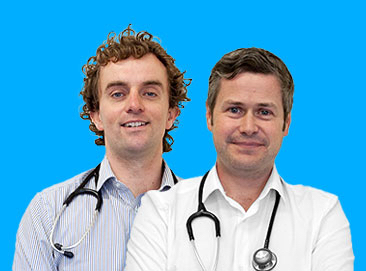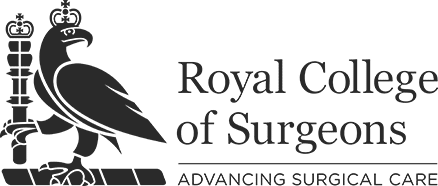If you are a GP and wondering “Should I join a GP partnership? How much do GP Partners earn? Why are brackets on a GP practice accounts bad news?” then this page is for you.
As GPs, but also accountants, ourselves, we know how little you are taught about the business of GP. So we have EVERYTHING GPs need to make better financial decisions.
Here Liz Densley FCA CTA from Honey Barrett specialist medical accountants and Medics’ Money co-founder Dr Ed Cantelo, salaried GP, Chartered accountant and tax adviser ACA CTA take you through some things to consider if thinking about joining a GP partnership.
How much do GPs earn?
The estimated average income before tax of GPs in GMS or PMS contracts in England in the financial year 2018-19 was £98,000.
Data from the NHS shows that the average amount a GP practice was paid per patient in 2019/20 was £155.46.
By any measure, that is incredible value for a year of unlimited care for the patient that is free at the point of use. According to the Association of British Insurers the average cost of pet insurance in 2018 was £279 per year and a one-year subscription to Netflix premium at the time of writing was £168.
New GP Partner?
Our flagship New to GP Partnership will teach new GP Partners everything they need to know. Find out how to apply here.
Our podcast has an entire episode on what new GP partners should consider. Click here to have a listen.
This article gives a basic outline of what is included in practice financial accounts, how they affect individual partners and highlights areas that should give rise to questioning and requests for further explanation by a doctor planning to join a practice. It does not go into detail of how GPs earn their money.
Medics’ Money is run by doctors and finance experts, for doctors. Our free financial CPD gives you all the knowledge you need to take control of your finances.Join 30,000 doctors and receive free, exclusive, financial CPD for doctors in your inbox.

The practice accounts
Every GP practice should prepare financial accounts up to whichever year end the practice has chosen. If a practice does not have accounts to show you, that should be a big red flag. That said, however, do not expect final accounts to be provided earlier than 4 months (and probably 6 months) after the year end. Accounts prepared earlier than that risk leaving out some sources of income that have been earned but where the cash hasn’t been received.
Note that the date the accounts were finalised can be quite telling. Accounts finalised very late (so January for a March year end practice, just in time for the tax return deadline) can often indicate that there are problems – either with record-keeping, or with partners disagreeing about the figures.
Other red flags: Look out for brackets in totals: brackets for the balance carried forward on current accounts will normally indicate that the partner concerned has drawn out more than his share of profits and investment in the business. Brackets for net assets may indicate that the practice cannot meet its bills as they fall due.
Generally, if you see brackets – ask about them (but note that they can be perfectly innocent – sometimes they are just used to show a deduction that is expected, for example to deduct amounts drawn from profit shares to show a balance remaining.)
What do the accounts of a GP practice consist of?
The list below outlines what the accounts of a GP Practice consist of. These constituent parts are explained in more detail as follows:
- A list of partners
- Income and expenditure account
- Balance Sheet
- Explanatory notes
- Benchmarking statistics and local comparisons in some cases
A list of partners
The list of partners can be telling. For example, have there been recent changes? If so have these been a case of normal retirement or is it an indication of unhappiness within the practice? Try to find out more about the history of the practice and reasons for partnership changes. What other planned changes are there?
“What medical school didn’t teach us about money” will give doctors a step by step plan to transforming your financial future. Enter your details to download your copy nowWhat medical school didn’t teach us about money

The income and expenditure account
The income and expenditure account will show income earned during the practice year. Note this is not cash received in the year for work done but the financial value of work done – with the balance sheet (see below) showing money still due to be received at the accounting date for work already done.
The balance sheet
The balance sheet is a snapshot of the practice’s financial situation on the practice accounting date. The main elements of the balance sheet are shown below.
What is included in the balance sheet?
The first half will show:
- Tangible assets owned by the practice
- Current assets
- Current liabilities – amounts due to be paid by the practice for goods
- The total of the assets and liabilities is the total ‘net worth’ of the practice
The second half will show:
- The partners’ capital accounts
- The partners’ current accounts
The first half of the balance sheet will include tangible assets owned by the practice – such as the practice premises, fixtures and fittings, equipment, computers etc. The accounts show the original cost of these less ‘depreciation’ – which is a calculated figure to spread the cost over the useful life of each asset to give a ‘net book value’. Note that freehold premises are normally shown at cost, or at valuation the last time someone bought in – it does not normally show the current value of the premises or the value at which you will be expected to buy in.
The first half of the balance sheet will also show “current assets” and “current liabilities”. Current assets consist of items such as the stock of goods held such as drugs and dressings etc, amounts due to the practice for work done, bank account balances and any cash balances.
The current liabilities are amounts due to be paid by the practice for goods purchased (such as drugs) or services used (such as light and heat, or accountancy fees). Current liabilities also show any bank overdrafts and loans. Where loans are material, they can be split between amounts due within 12 months of the accounting date and the longer-term amounts being shown separately.
The total of the assets and liabilities is the total ‘net worth’ of the practice. This is represented by the investment that the partners have in the practice.
The other half of the balance sheet will show the capital accounts and current accounts of the partners. The partners’ capital accounts are normally the tangible assets less mortgages, or the premises only less mortgages
The partners’ current accounts is the practice ‘working capital’ made up of any tangible assets not included in Capital accounts plus the current assets and less the current liabilities. Current accounts will show the balance at the beginning of the year for each partner, will add the profit share earned and take off the amounts drawn (this might be by way of ‘salary’, or payment of superannuation liabilities or payment of tax – collectively known as ‘drawings’) to give a net result of undrawn profits, being the total current account balance. Be aware that profit is your share of what the business has earned whereas drawings are what you have taken from the business. The business needs working capital – so you cannot usually draw everything that you earn (and pay tax on).
The explanatory notes
Finally the accounts will also provide explanatory notes. These will give more information about individual items within the profit and loss account and balance sheet. They may also give information about the accounting methods used and how certain figures are calculated.
Join 30,000 doctors and receive free, exclusive, financial CPD for doctors in your inbox.
Medics’ Money is run by doctors and finance experts, for doctors. Our free financial CPD gives you all the knowledge you need to take control of your finances.

Using the practice accounts when looking to join a practice
When someone is looking to join a practice, they can and should use the accounts as a starting point to ask questions. Questions will include those regarding the profit of the practice, and how these are allocated, and the earning capacity of the practice as well as what happens regarding the premises if a new partner joins and taxation.
Profit shares
Firstly, it will be important to look at and consider the profit per full time equivalent partner or per session/per partner. Secondly how are partner drawings calculated? Will you get a regular amount each month and perhaps a bonus once or twice a year? Or does the practice operate a ‘piggy bank’ method – how much is left at the end of the month and share it in profit sharing ratios? The latter can give rise to huge variances from one month to the next and that can be hard for a new partner to budget with.
The accounts will show partners’ current accounts, as mentioned above, and box 3 breaks down what these consist of. You should ask if the current account balances are held in profit sharing ratios? If not, what steps are being taken to address this? What working capital will a new partner be expected to hold – will they have to pay in cash – or will it be built up by restricting drawings from the practices over a period and if so, how long a period? Be aware that working capital being a snapshot on a certain day is a moving target – so the practice will never be able to give you a precise figure for this in advance.
Partner’s current account
A partner’s current account will show:
- The balance brought forward from last year
- The profit share earned
- Drawings taken out of the business by the partner
- The net result showing undrawn profits and the current account balance that will be carried forward into the following year
Be cautious where a partnership has a huge number of ‘prior shares’ of profit – that can indicate that they are not working together as a team. It may also mean that a new partner will struggle to earn average earnings in that practice until they have built up their own extras that are pre-shared.
Will a new partner come in at ‘parity’, that is a full profit share based on sessions worked – or will it be lower in the first period(s) to reflect the settling in time before they bear a full share of the work? Generally high earning practices are more likely to have a less than parity starting point. If a low earning practice suggested less than parity, it would probably be offering less than a salaried doctor, so there would not be any takers.
It is sensible to look at the “profit per session after employer’s superannuation” to compare it to a salaried doctor per session. Make sure the comparison is like for like (who pays medical indemnity for example). Then be aware that “take home” pay will be restricted by a working capital contribution in the early years. If the practice is not holding back funds for any superannuation balances, tax or National Insurance Contributions, look at what needs to be saved to arrive at real “spendable” income – to compare to what you could get as a salaried doctor. But bear in mind that you will normally be building up a balance that would be repayable to you if you were to leave the practice.
Comparison to previous accounts
What has changed materially since the last accounts? For example, have they taken on (or lost) salaried doctors? Have they changed their policy on using locums? What sources of income have ceased/reduced or indeed are new/increased – and have these changes had any effect on doctor or clinical staff sessions?
Earning capacity of the practice
Is there anything that affects the earning capacity of the practice? For example, rural dispensing practices will usually rely on their dispensing income to bring their general practice earnings to a good level. If there is a risk that dispensing will be lost, then the practice may not be viable. University practices will tend to have a healthier population so income based on specific health issues will be low – but patients per doctor will tend to be higher as they should be easier to handle than say an elderly population in a deprived area. Is there any one-off funding included within the practice that will not recur? Are they a former “Personal Medical Services” (“PMS”) contract practice that has a reducing level of funding to bring it back to “General Medical Services” (“GMS”) contract levels?
Below are some examples of the types of practices which can earn more
Types of practices which can earn more:
- Dispensing practices with a high list size and with a well-organised dispensary
- Practices with high disease prevalence and high levels of enhanced services
- Practices with a very high ratio of low paid salaried doctors to partners (although it is unlikely that such practices will offer any partnerships)
- Practices with very high levels of patients per doctor (but this is probably through need rather than choice and unlikely to be sustainable unless additional resources are brought in which will reduce profits per partner)
While below is a list of the attributes of high earning practices.
Attributes of high earning practices:
- Stable partnership (low turnover of partners)
- Partners work as team and trust each other, plan ahead and meet regularly
- Partners have similar philosophies in terms of the dichotomy between money and patient care
- Proactive rather than reactive teams
- Good managers of time
- Well-organised GPs with strong staff teams and good skills mix amongst them
- GPs who delegate well to paramedics, nurses, health visitors etc
- GPs who work long hours, have low deputising costs and a high level of non NHS earnings
Be wary of looking at accounts and assuming that the same level of income will continue. Look at them critically – does a retiring partner provide a specific service that will be lost? Are there enhanced services that will not continue? Are partners working at unsustainable levels – so that salaried doctor costs or locum expenses for example will increase in the future? How dependent is the practice on locums and how will this affect a new partner?
On the other hand, look for opportunities: is there a new housing estate locally that will result in an increase in patients? Are there skills you can bring to the practice that will bring in money not currently earned? When it comes to “Quality and Outcomes Framework” (“QOF”) indicators, does prevalence look lower than expected – perhaps indicating coding problems that could be sorted? Specialist medical accountants should be able to provide a summary of prevalence by Clinical Commissioning Groups (taken from nationally available statistics) which will show if a practice is above or below local averages. Is non-NHS income very low – perhaps indicating that opportunities to charge are being missed? Are QOF points low because of time pressures?
Be aware that income will vary hugely from area to area. Among neighbouring practices it is not uncommon to see a practice with, for example, enhanced earnings of over £35 per patient, whereas a few miles away, under a different CCG, another practice may do all the available enhanced services yet struggle to reach £15 per patient. There is a substantial amount of data available at NHS Digital referenced below.
PMS practices have historically been more profitable than GMS practices – but that difference has and is continuing to narrow. Many PMS practices are receiving temporary funding to soften the blow of reducing their income down to GMS levels.
Number of patients per doctor
Consider how many patients there are per partner and how many patients there are per doctor (i.e. partners and salaried doctors) and try to understand why if this is materially different (or materially different) to the average. Are other medical professionals used – such as nurse practitioners, paramedics, pharmacists? What policies are in force to handle the workload?
Taxation
Note that partners are self-employed and responsible for their own tax liabilities – tax is not deducted at source as it is for employees i.e. there is no Pay As You Earn (“PAYE”) as you will be used to as a GP trainee. However, in some cases the practice may withhold a proportion of the drawings paid out to its partners essentially restricting drawings to enable them to save for their future tax bill. So ask if partners have to save for their tax liabilities personally or if drawings are restricted so that the practice pays it. If tax is saved in the practice it can make life easier. However there may be disadvantages – for example for people with offset mortgages, holding your own tax savings against your mortgage is commercially very appealing.
Does the practice have a year end of 31st March? If it is, this makes the calculation of tax (and pension) much easier particularly in the early years. Where there is, for example, a 30th June year end then the calculation of tax and pension in the early years and leaving years gets more complicated, with a potential ‘tax time bomb’ on leaving, so bear this in mind.
The premises
If the property is owned by the partners, will a new partner be expected to buy in – and if so when? Will they take over a share of joint borrowing or will they have to raise funds personally? If a new partner is not buying in, is there a clear agreement as to what is a partnership practice cost/income and what relates to the property owners. Note there can be a conflict of interest where former partners owner some of the property – as they will want maximum income – whereas the practicing partners may want non-essential repairs done and improvements to the premises.
Are the premises ‘fit for purpose’? Are there expensive repairs in the pipeline that a incoming partner might be expected to have to pay for? Is there a dilapidations policy (so effectively those who used the property bear the repair costs as they accrue)? Will the practice have to move – and what are the implications. Are there any major builds/extensions in the pipeline?
Goodwill
Goodwill is an “intangible asset” which in simple terms reflects the value of a business over its identifiable business assets. Note that general practices may not charge incoming partners for ‘goodwill’ for core services. When the NHS came into being originally, it was set up such that a practice could not profit from the regular flow of income and sell that flow as ‘goodwill’. Such a sale is a criminal offence. There are still practices occasionally who try to engineer some sort of capital payment to an outgoing partner (other than to buy out a share of the practice assets which is perfectly acceptable). Seek legal advice if this is suggested.
Is there a partnership agreement?
Finally, is there an up to date partnership agreement? Has it been prepared by a specialist lawyer, or at least someone who understands how GP practices work? Make sure you see the agreement – or at least a planned heads of agreement before you join. If you join a practice without an agreement, you risk it being dealt with under the default Partnership Act 1890 in the event of a dispute which certainly won’t be what the partners are expecting.
How does this affect a new GP?
The decision to enter partnership is an important business decision and the points raised in this article need to be considered. But it is also important to find a workplace and colleagues that you will be happy to spend the rest of your career with. A successful partnership is not only high earning but also supportive and able to adapt to new challenges. A less successful partnership may see the partners earning less than their salaried doctors and working significantly more hours. Prior to joining a partnership we would recommend going through the accounts with a specialised medical accountant whether this be the current accountants or an independent accountancy firm
How much do GPs earn and should I join a partnership? – Key points
- The accounts of a GP practice will show its assets and liabilities, income and expenditure and the partners’ capital and current accounts.
- Use the accounts as a starting point to trigger a discussion about practice finances
- Make sure profit shares and drawings are clearly defined
- If you don’t fully understand accounts, seek an independent person (who understands GP accounts) to review them and draw attention to areas that need further explanation.
- The decision to enter a partnership is an important business decision but remember it is also important to find a workplace you will be happy at.
Locum GP?
We have everything locums need. Click here to download our helpful guide.
If you need an accountant to help you, we have collected all the best specialist medical accountants and we can match your requirements to the best adviser for you. Find an accountant now.
What makes Medics’ Money the best place for GPs to find an accountant?
You’ll find the answer to that question here.
Read on this page for an overview of how to understand the GP Practice accounts.
References and further information









